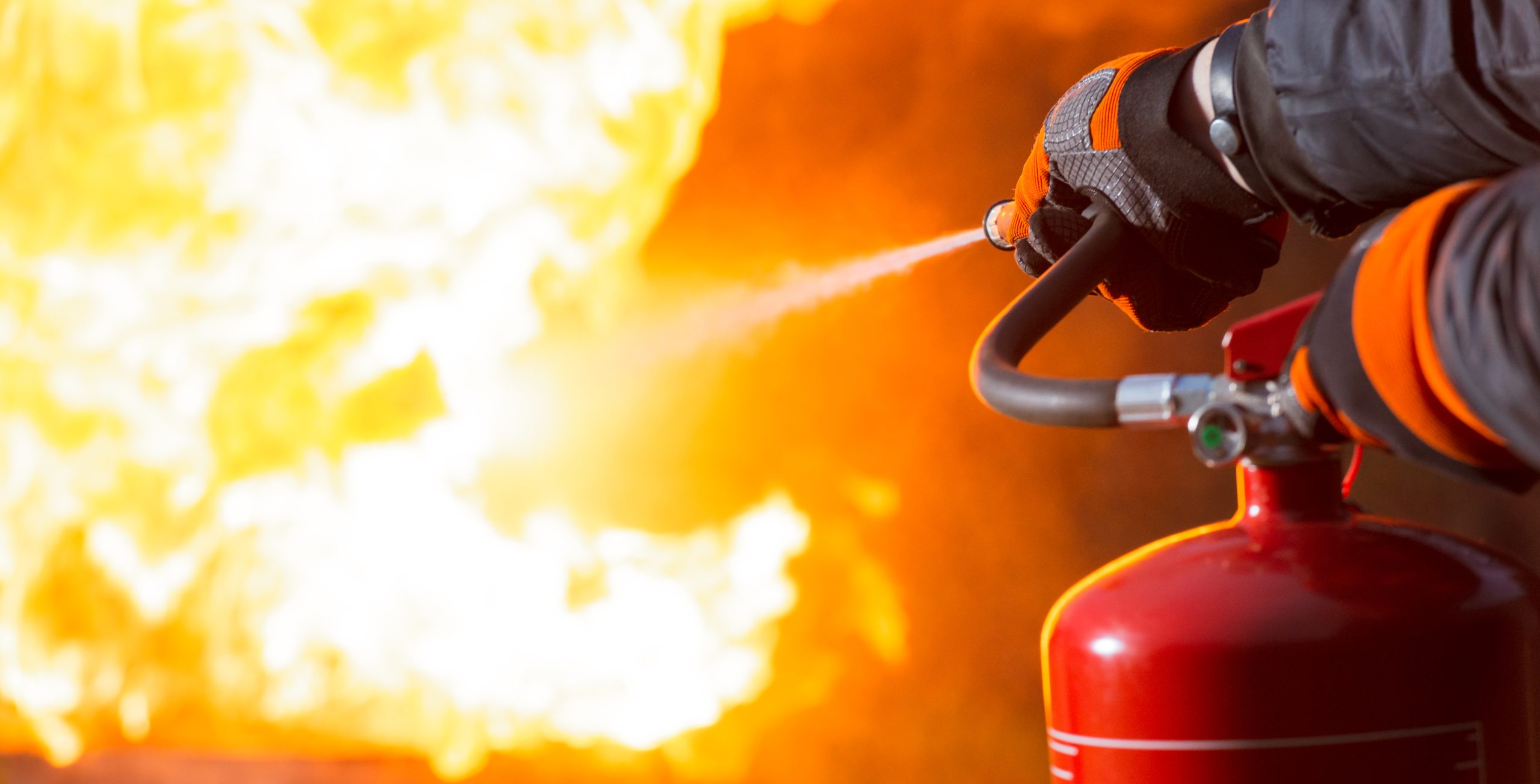In this article, Ian M B Scott, volunteer member of the IOSH Fire Risk Management Group, looks at the new Fire Safety (England) Regulations 2022 and what they mean for health and safety compliance in the workplace
The Fire Safety (England) Regulations 2022 (SI 2022 No. 547) came into force on 23 January 2023 to implement the provisional findings of the inquiry into the tragic Grenfell Tower fire.
The Fire Safety (England) Regulations 2022 apply to all buildings in England that comprise two or more domestic premises (including the residential parts of mixed-use buildings) although there are more requirements depending on the height of the building.
In ‘high rise residential buildings’ (HRRBs), with at least 7 storeys or a height of more than 18 metres above ground level, the legislation reinforces basic concepts of life safety and the Responsible Person (RP) has additional duties in relation to:
- Secure information boxes
- Design and materials in external walls
- Floor plans
- Lifts and firefighting equipment
- Wayfinding
- Provision of information electronically to the FRS.
What is the purpose of the Fire Safety (England) Regulations 2022?
These compact Regulations put into legislation long-established principles of fire protection. The Regulations focus on fire precautions, measures that an RP can take to protect people, buildings, property and businesses from the consequences of a fire
Guidance and detail of these fire precautions have, for years, been made public through publications from government, fire and rescue services (FRS), institutions such as the Institution of Occupational Safety and Health (IOSH) and Institution of Fire Engineers (IFE) and insurance companies.
This active review and restating of fire precautions and their place in society is timely.
How do the regulations improve fire safety compliance?
The fire safety regulations address the need to provide the following essential fire precautions, which are focused on life safety and property protection to enable, wherever practicable, safe evacuation from the building.
The reader may think that these obvious fire precautions would be ‘standard issue’ in the design and build of any HRRB. However, as found by the Grenfell Inquiry team, this is not the case.
Installing a secure information box
Installing a secure and vandal proof box in or on the outside of the building is fundamental to providing readily accessible information to the fire and rescue services. Basic information contained within the secure information box must include:
- The name, address and telephone number within the UK of the responsible person
- Similar contact information for other persons, such as contractors, within the UK who are provided with the facilities to, and are permitted to access, the building as the responsible person considers appropriate
- Hard copies of the building’s floor plans, which identify specified key fire-fighting equipment
- A single page block plan, which identifies specified key fire-fighting equipment
- The secure information box should be inspected annually, and the contents kept up to date in line with the duties imposed by the regulations and the Regulatory Reform (Fire Safety) Order 2005 (RRO).
Design and materials for external walls
Records of the design and construction materials of the external walls of the building are essential to assist the fire and rescue services and enable them to plan tactics for incidents.
The record includes details of the level of risk identified in the RRO fire risk assessment (FRA) and must be revised if significant changes occur to the external walls of the building.
Floor plans and building plans
Fundamentally, a plan for each floor of the HRRB is needed to be shared electronically with the local FRS and a hard-copy kept in the secure information box. Critically, simple plans are needed to facilitate decision-making by operational fire-fighters during an incident. The floor plans must identify the location of all lifts and the key fire-fighting equipment in the building.
Passenger Lift(s) and essential fire-fighting equipment
The requirement for monthly routine checks of lifts and essential fire-fighting equipment adds assurance and steps must be taken to rectify faults where identified within a 24-hour period. It is responsible for the duty holder to report electronically the fault to the local Fire & Rescue Service and to advise when it has been repaired.
For confidence, records of the monthly checks undertaken must be accessible to residents. For clarity, it is useful that ‘essential fire-fighting equipment’ and ‘routine check’ are defined.
For consistency, lifts and secondary or back-up power supplies, as well as any other fire-fighting equipment, should already be subject to a suitable programme of inspection and maintenance.
Wayfinding signage
For simplicity the building needs clear, highly-visible markings of floor identification and individual flats and for ease markings are in accordance with the guidance in Volume 1 of Approved Document B (1) on each landing, within the stairways and in the lift lobbies of the floor level.
Information to residents
In common with accepted practice, readily understandable fire safety instructions to enable residents to evacuate in the case of an emergency must be displayed. The need to provide instructions on how to report a fire and a reminder of what the evacuation strategy is for the building is essential, post-Grenfell.
In ensuring that all residents understand instructions the regulations do not require these instructions to be translated into multiple languages, but a building manager should use their own discretion.
Fire doors
Required information about fire doors must be given to residents. This includes the instruction that fire doors should be kept shut when not in use, that residents or their guests should not tamper with the self-closing devices and that residents should immediately report any faults or damage with doors to the manager.
For enhanced assurance, best endeavours to undertake checks on fire doors at the entrances of individual domestic premises must be made at least every 12 months. It is good practice that a record of the steps is taken to comply with the duty, including any cases where access to the domestic premises was refused during any 12-month period, and all steps taken to try and gain access are kept.
Prior to the Fire Safety Act 2021, entrance doors in multi-occupied residential buildings may not have been a part of the Fire Risk Assessment (FRA) process. The Fire Safety Act 2021 has corrected legal ambiguity and confirms that flat entrance doors are within the scope of the RRO.
Residents should be encouraged to allow responsible persons access to check their front doors. The duty holder should be able to carry out these checks personally. There are technical guides available online which can help a responsible person in undertaking checks. If any issues are identified from these checks, more appropriate detailed checks of doors or the self-closing device should be undertaken.
Fire safety compliance in the workplace
In addition to fire safety in any residential or domestic environment, where most fires happen, fire precaution in the industrial, business and commercial sectors has been fundamental for years, principally since the industrial revolution.
Driven initially by insurance companies, for property protection and business continuity, strong standards of fire precaution in industrial buildings have been much more technically driven.
The enhanced fire protection of buildings with the adoption of fire sprinkler systems, fire rating of walls and structural elements to mitigate building collapse, automated fire detection, fire alarm and evacuation systems, protected routes for means of escape, fire drills and training for workers and stricter standards of design, construction and management of buildings have all contributed substantially to a safer environment.
Potential means of ignition differ significantly between residential and industrial environments. Although electrical means of ignition occur in both, industrial systems are perceived to be a lower fire risk with the extensive use of ELCB and RCD devices, PAT and fixed wiring assessments of supplies.
Conversely, there is a higher fire risk in the industrial sector due to the greater prevalence of dangerous substances with a more significant fuel burden from flammable gases, liquids and solids. Integrating DSEAR assessments with conventional RRO type fire risk assessments is now essential for the control and mitigation of risk from dangerous substances in the industrial sector.
In terms of fire safety compliance in the workplace the most prominent concerns are:
- Employee, contractor and public life safety
- Complying with the principles of Designing for Fire Safety (D4FS) in ALL aspects of design, including design of work activities, human factors and design of the workplace environment
- Fire risk assessment (combined FRA+DSEAR assessment in one process) for compliance with the RRO
- High quality Fire Risk Management Systems, including hot work permits (HWPs)
- Exemplary information, instruction, training and supervision of all employees and contractors.
Significant contributions to industrial workplace fire safety result from work done in information, education and training by organisations such as IOSH and IFE.
The IOSH Fire Risk Management Group has been influential with its fire safety back-to-basics campaign, featuring webinars to publicise the Group’s Six Principles of Fire Safety:
- The chemistry of fire
- Fire prevention
- Fire precautions
- Fire investigation
- Designing for fire safety
- Utilising new and emerging technologies to combat fire.
However, it is the new emerging electric vehicle (EV) sector, including electric bicycles and electric scooters, that is posing a significant fire risk.
This risk is prevalent in the home with often tragically fatal results due to rechargeable lithium battery systems and inappropriate modifications made to E-bikes and E-scooters.
With EVs, such as cars and vans, manufacturers of vehicles and charging equipment appear to be delivering well designed products. Statistics show that competent installation and operation is crucial, though, in residential and industrial environments, for all alternative technology systems.
Ian M B Scott CFIOSH

Volunteer member of the IOSH Fire Risk Management Group














